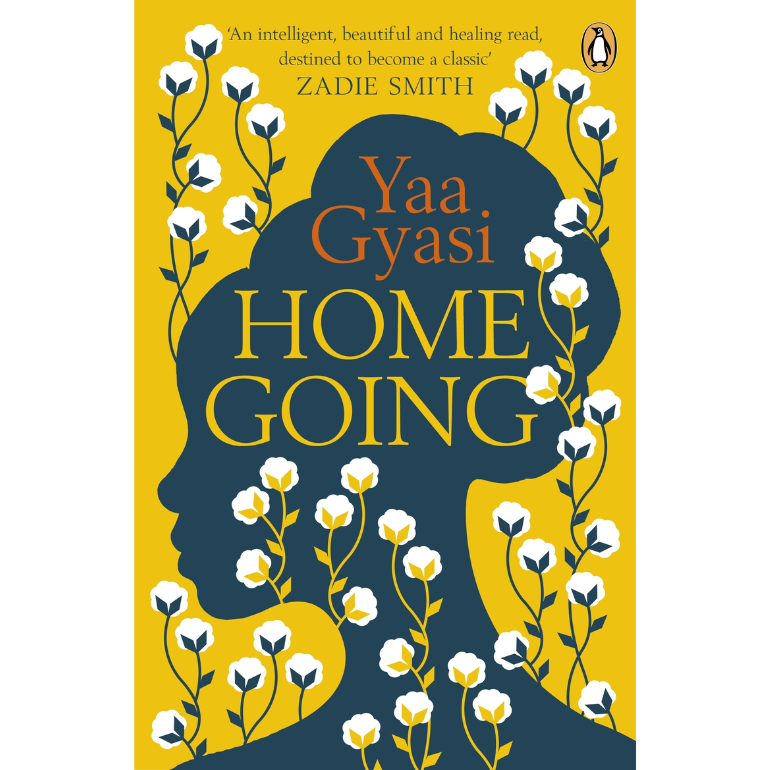Book Reviews
As a Black Reader, Homegoing Brings You Home | A Review of Homegoing
“She’d discovered that only the white men talked of “black magic.” As though magic had a
colour.”
Of course, magic has a colour – it is the thought process of Yaa Gyasi in delivering this
historical fiction novel, the intentionality in the title of the book, and the emancipation from
shackles to freedom. The Yorubas will say, “omi ni’eyan – humans are water,” and this book
proves why. It also perfectly reminds readers of the advice of a great African philosopher that
says, “no matter where you goooo, remember the road that will lead you home… BODE
THOMAS!!!”
It’s sometimes hard to process that this is a debut novel and to process that this is just the tip
of the iceberg of what Black people suffered during the slavery years. Forgiveness is not
forgetting what transpired but being able to live with it until remembrance doesn’t hurt nor
acts as a trigger for violent vengeance. If there’s one thing countless books on slavery have
taught everyone, it is that as much as the slave masters were heartless, shameless and should
burn forever, people that look like us and share the same skin colour as we were the ones
selling us out to the Whites for money.
Set in the 18th century Gold Coast and the U.S. to modern-day Ghana and the U.S., and
divided into two parts, one will think each will talk about both sisters, but that was the first
point of brilliance in the book; that’s not how it was distributed. It follows the story of two
sisters, Effia Otcher and Esi Asre, synonymous with grief and no happy endings. Each
preceding story is connected to the succeeding or two succeeding stories. Yaa takes readers
on a journey from the slavery times of the Gold Coast (present-day Ghana) to freedom. From
the slavery days of God’s own country to the “freedom” of black men today. Several journeys
of friendship, betrayal, love, trust, broken homes, superstitions etc.
Effia was married off to slave master James. This was after she was born on the “night of
fire” when her mother ran away and left her. The same James was the slave master who sold
off Esi and took away the only connecting piece that could have let both sisters ever
recognize themselves. Esi was a slave living in the same castle as her sister, raped in the same
castle that her sister was having consensual sex in, eats as a peasant in the same castle her
sister eats comfortably in, sleeps in the dirt in the same castle that her sister sleeps on the bed
in, waiting to be transported to the Caribbean and America from the same castle her sister
moved into her own comfortable house from. Esi was captured by “bomboys,’ local boys that
worked for the British slave masters and raided their people to sell. Effia was happily
married.
From the first two character stories to the last two, there’s a chain of progress (pun intended).
Spanning seven (7) generations for each of the major characters, their stories started as a
family that didn’t know each other in Ghana and ended as a family about to begin in Ghana.
Every character has a story, and every story is a progression from two stories ago. It follows
several beliefs and superstitions. From how our forefathers believed in their beliefs to the
superstitions that didn’t save them from seeing shege to the missionary, it takes us through
different regions of Ghana; several tribes, particularly the Asantes and the Fantes; several
places; introduces a lot of Ghanaian names to foreign audiences, introduce new books on
slavery in America; takes us to several American states and their atrocities; introduces a
museum to us; reminds us of the impact of Jazz music – all from flipping pages and
absorbing the books. It’s hard to come to the fact with the terms that it is a debut novel.
The book also explores feminism in Africa from several centuries ago. Some issues discussed
in the book are still being faced in the 21st century. From underage marriages to women being
judged by the gender of their wards and women being denied inheritance because of their
gender. One turning point for me was when at some point during one of the stories set in the
Gold Coast, it said, “mothers, sisters, and their sons are most important. If you are Chief,
your sister’s son is your successor because your sister was born of your mother but your wife
was not. Your sister’s son is more important to you than even your own son.”
I still can’t wrap my head around the fact that there was a time when people were thinking
this way, but I’m not surprised either. One of the wildest things I have read on Twitter this
year was, “Your wife is not family.”
The issues addressed in the book are still widely experienced today. In one of the stories, Yaa
Gyasi discussed addiction to drugs and how addicts rarely truly recover. That same story talks
about support – a mother’s unending love for her child. Two mothers – one is the grandmother
and the other is the mother and how they both understand showing love to their grandchild
and child – are the same character. Another story talks about mental health. How a child that
isn’t dumb or deaf refused to speak for a very long time because nowhere felt like home until
she found a person that was willing to listen and not judge. Sometimes, all we need is a push,
a smile, and words of reassurance that everything will be fine.
One of the stories mentions that Ghanaians were not the only slaves captured from West
Africa that served in several plantations during the slave trade. In the last story, the “Point of
No Return” was spoken about in Cape Coast, Ghana. There is also one in Gberefu Island in
Badagry, Lagos State. Sam, the partner of Ness, one of the generations of the Asares, was
Yoruba. Ness that gave birth to Kojo and gave up her life and Sam’s life for Kojo to live and
for him to be free. Kojo later lived some part of his life following buttocks up and down
thinking it was his wife’s. The only thing Musa didn’t see at the gate reading this book was
nothing.
Without patience, a reader may lose interest in following the stories. The introduction of new
names at the start of new chapters and the ‘not-immediate’ correlation of the names to a
previous character mentioned may bore and make the story lose its main purpose. There are
too many emotions running in the book and too many interconnections. It’s a book that, if
you start and do not finish, you cannot join a conversation about it because every story is an
onion, there’s always something else inside. It’s also a story that if you finish reading and did
not pay attention to the names while reading, you may not be able to recall the story.
One thing Yaa shows consistently throughout the book is love. There was so much love that
one might almost forget that the book is talking about slavery. Homegoing makes you believe
there’s a happy ending elsewhere, but it’s not a happy ending that one can predict. As a black
reader, homegoing brings you home. As a traveller, the Gold Coast joins the list of your
‘must-be-visited.’ As a learner, history is presented to you on a tabula rasa as fiction.
Homegoing is a collection of the reader’s emotions, the brilliance of the writer’s description,
the love stories that were meant to be and those that were meant to end, and the repercussion for
every action taken, vices of the earlier centuries, the unbreakable bond that family brings –
this is not a trigger warning: your heart will break at some point.
About the Writer: Abdul-qudus is a writer and poet, with a passion for Africa. He is a frequent contributor to the anthologies of “EB Arts.” He also manages THE WILDKHARD READING CLUB, an online book club that reads and reviews African literature monthly.
Instagram: @tw_rc | @tomideabdul
Twitter: @twrc_ | @tomideabdul


